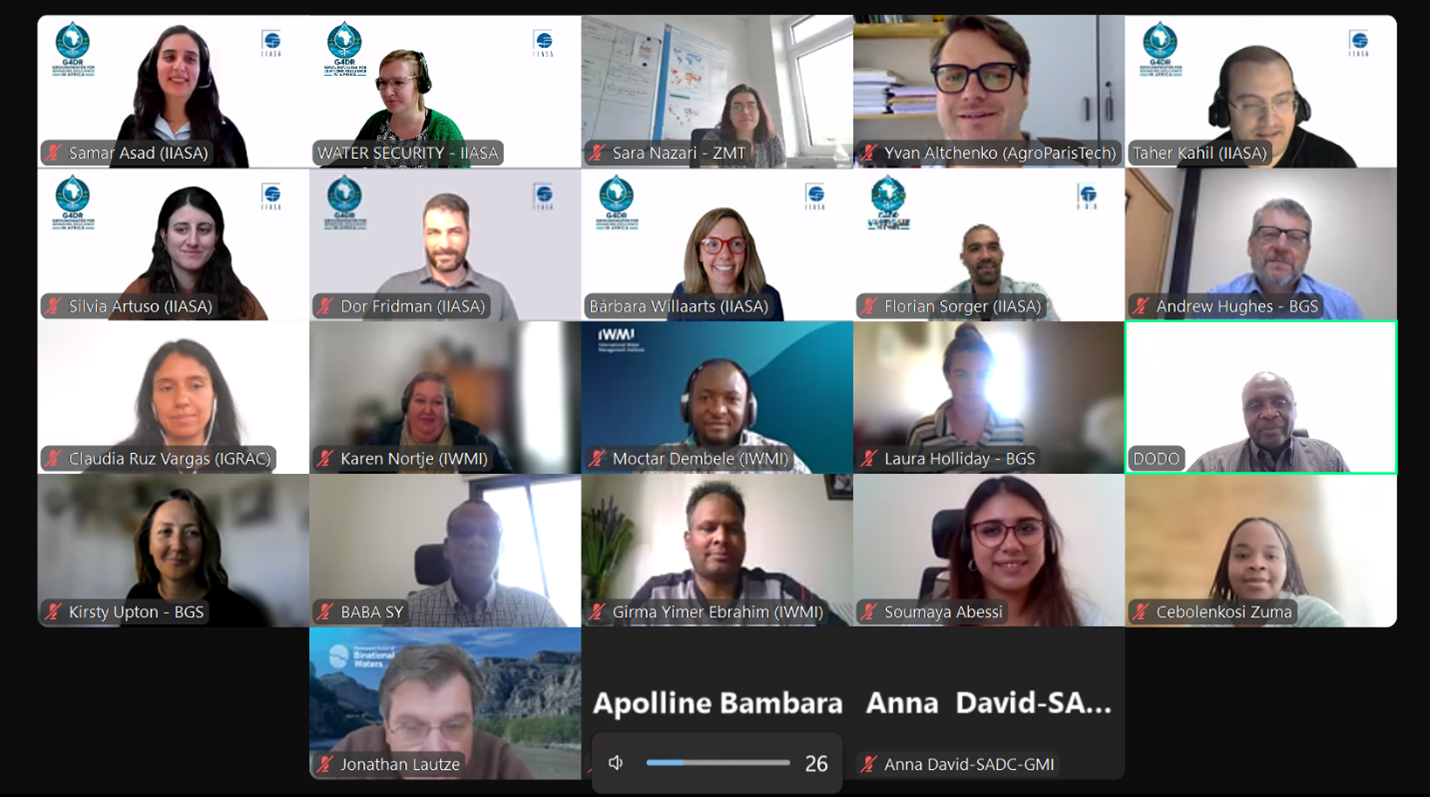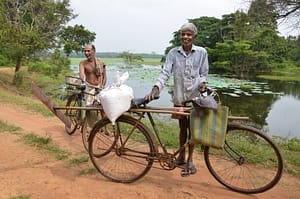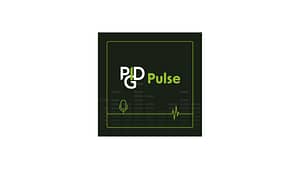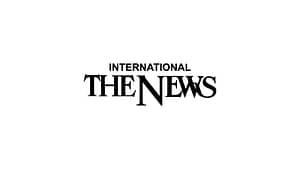by Dor Fridman, IIASA
On May 22, 2025, the International Institute for Applied Systems Analysis (IIASA) hosted experts in an online workshop identifying key groundwater-related risks and opportunities for enhancing water security and climate resilience across Africa. The workshop was convened through the G4DR project, bringing together 18 (Figure 1) experts from international and African regional institutions, including FAO, IWMI, OSS, SADC-GMI, IGRAC, BGS, AgroParisTech, and the Leibniz Centre for Tropical Marine Research. The workshop aimed to facilitate discussions focused on the prioritization of indicators for the assessment and mapping of groundwater risks and opportunities in Africa.

Figure 1: Group photo from the workshop.
Experts identify more Risks than Opportunities, especially at the Pan-African scale

Figure 2: Groundwater risks (red) and opportunities (green), identified through the workshop.
Through participatory mapping and group discussions (Figure 2), participants identified four categories of groundwater-related risks: technical, governance, environmental, and social. At a pan-African level, technical risks were emphasized, including significant data gaps, weak monitoring systems, and the underutilization of existing data due to limited institutional capacities. Fragmented governance frameworks, combined with the rapid spread of solar-powered pumping, raised concerns about unregulated and excessive groundwater abstraction. Environmental risks included natural (geogenic) contamination such as fluoride—especially in East Africa—and anthropogenic pollution from agriculture and inadequate sanitation systems. In arid and coastal regions, salinization of groundwater was identified as a significant threat. On the social side, issues such as elite capture and limited private sector engagement were identified as limiting equitable access to groundwater resources across the continent.
Groundwater Remains a Key Opportunity for Climate Resilience and Sustainable Development
Complementing the identified risks, a strong consensus emerged among participants that groundwater is a largely untapped resource with significant potential to support climate resilience and sustainable development in Africa. With appropriate institutional frameworks, targeted regulatory measures, and supportive policies, even currently perceived risks – such as solar pumping – can be transformed into opportunities. Participants emphasized the importance of conjunctive management of surface and groundwater, for example, which could be achieved through expansion of Managed Aquifer Recharge (MAR) and other innovative recharge practices.
Regional differences emerged. In North Africa, the reliance on fossil groundwater and high salinization risks highlight the need for Managed Aquifer Recharge (MAR) schemes. In West Africa, expanding infrastructure is critical to unlocking groundwater potential and supporting smallholder agriculture.
From Technical Framework to User-Friendly interface for uptake and Use
Based on the workshop insights, IIASA is developing the Groundwater Risks and Opportunities frameWork (GROW) for Africa. GROW will provide a structured, multi-dimensional tool that will help identify, map, and communicate groundwater-related risks and opportunities at continental, regional, national, and sub-national scales. A dashboard of groundwater risk and opportunity profiles will be developed, structured around four key themes.
- Natural: Physical characteristics of groundwater systems and water availability.
- Socio-economic: Human pressures and dependence on groundwater.
- Governance: Institutional and regulatory conditions affecting groundwater management.
- Infrastructure: Extent, inclusivity, and functionality of groundwater-related infrastructure.
A key aim of the dashboard will be to support regional strategic planning and national-to-subnational policy development. To achieve this aim, IIASA will leverage the G4DR partner network, including AMCOW, SADC-GMI and OSS. Ultimately, the effectiveness of the framework and dashboard will be measured by the level of uptake it achieves and the influence it wields.









